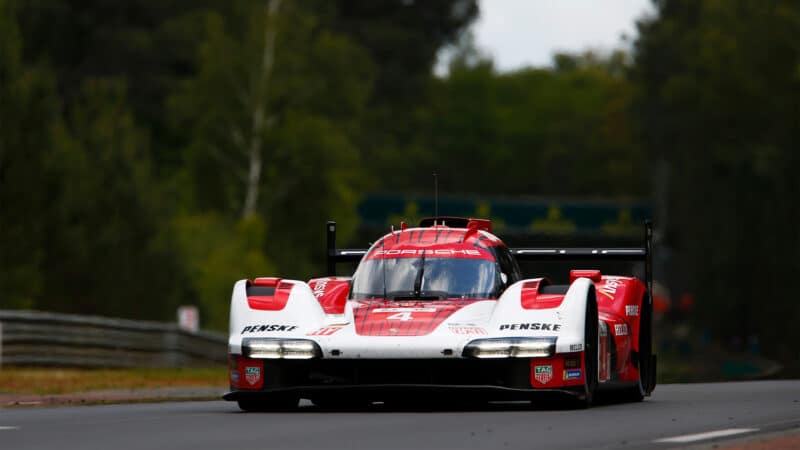How new Le Mans 24 Hours qualifying and hyperpole works for 2025
The hyperpole shootout decides the polesitter for the Le Mans 24 Hours. Here’s how the two-day qualifying format works

The Le Mans qualifying format has been revamped for even more pre-race excitement
Porsche
It takes place over two days amid much fanfare but qualifying for the Le Mans 24 Hours might be one of the more pointless exercises in racing.
The few metres advantage that the polesitter has over the next car at the rolling start has minimal significance over 24 hours of competition. Being at the front of the pack, however, does reduce the risk of getting caught up in first lap incidents, when the field is running closely together.
Perhaps most importantly, pole position is the source of some prestige and much publicity, benefitting the sponsors of successful teams. And so, Wednesday and Thursday offers the spectacle of top-level drivers pushing the limits of their Hypercars, prototypes and GT cars, separated by just tenths of a second over the course of the 8.467-mile course.
Qualifying practice
Much like other top level series, including MotoGP and Formula 1, the initial qualifying session is a fight to get into the next one. Each car has 60 minutes to set the fastest single lap time that it can, using one driver each, from the three per team that will compete in the race.
The cars are on track at the same time in a bid to be among the top eight from each category — Hypercar, LMP2 and LMGT3. These top eight go through to the next stage. For the rest, the time they set will dictate their grid position — more on which further down.
While drivers must push to the limit for a chance of a starting place near the front, going beyond it can prove costly as Toyota’s Kamui Kobayashi found last year when he went off, causing the session to be stopped. As he triggered the red flag, his qualifying times were wiped, meaning the Japanese driver and his two team-mates had to start at the back of the Hypercar pack.
Hyperpole

Who will grab pole position bragging rights at Le Mans ’25?
Getty Images
For 2025, hyperpole at Le Mans is a two-stage shootout held on Thursday evening, with separate sessions for each class.
Stage 1 (H1): The fastest 15 Hypercars and the top 12 cars from both LMP2 and LMGT3 Wednesday’s qualifying sessions return to the track for a 20-minute shootout in their respective categories. Only one driver per team takes part, aiming to set the quickest lap.
Stage 2 (H2): The top 10 Hypercars and the top eight from both LMP2 and LMGT3 in H1 advance to final hyperpole sessions (H2). This decisive 15-minute shootout determines the pole sitter and the front grid positions for each class.
As before, only one driver per car participates in each session. The fastest lap in the final hyperpole session secures pole position for their category, with the rest of the grid set according to the results from these sessions and the earlier qualifying.
Grid positions
For 2025, the starting grid at Le Mans is structured to keep each class grouped together, regardless of individual lap times. This ensures that Hypercars, LMP2s, and LMGT3s each start in their own distinct sections, reducing the risk of incidents with faster cars starting behind slower categories.
After the two-stage hyperpole sessions, the grid for each class is set as follows:
The front of the grid is occupied by Hypercars. The top 10 Hypercars from the final hyperpole session fill the first positions, ordered by their fastest laps in that session. The next five Hypercars (those eliminated in the first hyperpole stage) line up behind them, followed by the remaining Hypercars based on their initial qualifying times.
LMP2 cars are grouped behind the Hypercars. The top eight from hyperpole fill the leading LMP2 positions, followed by the next four (from the first hyperpole stage), and then the rest based on their original qualifying times.
LMGT3 cars start behind the LMP2s. The top eight from hyperpole take the front LMGT3 spots, followed by the next four, and then the rest in order of their qualifying times.
If a car fails to set a time in any session, it will start at the back of its class group.
